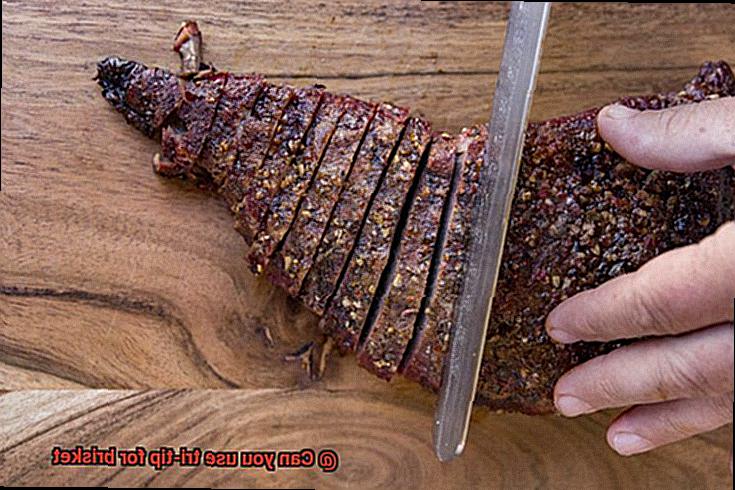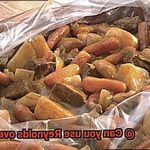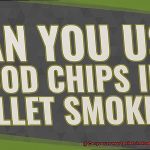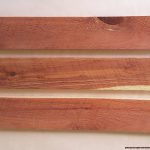Are you a BBQ enthusiast looking for a mouth-watering alternative to the traditional brisket? Look no further than tri-tip. While not as well-known as its beefy counterpart, tri-tip is a leaner and more tender cut of beef that can be just as delicious when cooked correctly.
But before you fire up the grill, it’s important to understand the differences between these two cuts. Brisket comes from the lower chest of the cow and is tough and fibrous, making it perfect for smoking. Tri-tip, on the other hand, comes from the sirloin region and is leaner with less fat content.
Using tri-tip for brisket may not be conventional, but it’s a great option for those who can’t find a good brisket or don’t have hours to spare for low and slow cooking. However, because of its lower fat content, some modifications to the cooking method may be necessary to prevent drying out.
In this article, we’ll dive into the similarities and differences between these two cuts of beef and provide tips on how to make your tri-tip taste like brisket. Get ready to impress your friends and family with your newfound BBQ skills.
Contents
Difference Between Tri-Tip and Brisket
Two popular cuts of beef that are often compared are tri-tip and brisket. While they might seem similar at first glance, these cuts have distinct differences that make them unique.
Tri-tip is a leaner cut that comes from the bottom sirloin area of the cow. It has a mild yet delightful flavor and tender texture, making it perfect for grilling or roasting with minimal fuss. However, due to its lower fat content, tri-tip can dry out quickly if overcooked. Therefore, it’s best served medium-rare to medium for optimal taste and texture.
On the other hand, brisket comes from the chest area of the cow and is known for being a tough cut of meat. It requires low and slow cooking methods like smoking or braising to break down the connective tissues and become tender. Brisket has a higher fat content than tri-tip, which helps keep it moist during the long cooking process. The result is a heavenly rich, smoky flavor and melt-in-your-mouth texture that will make any meat lover’s heart sing.
But what sets these two cuts apart? Here are some key differences:
- Texture: Tri-tip is tender while brisket is tough.
- Flavor: Tri-tip is mild while brisket is rich and smoky.
- Fat content: Tri-tip has less fat than brisket.
- Cooking method: Tri-tip is best grilled or roasted while brisket requires low and slow methods like smoking or braising.
It’s important to note that these cuts are not interchangeable. Due to its lower fat content, tri-tip cannot substitute brisket in low and slow cooking methods. If you try to smoke or braise tri-tip like you would a brisket, you’ll likely end up with tough, overcooked meat.
Similarities Between Tri-Tip and Brisket
Firstly, both tri-tip and brisket come from the lower part of the cow, and they offer a rich, beefy flavor that’s hard to resist. Additionally, they are best cooked low and slow to achieve optimal tenderness. This means that they require longer cooking times at lower temperatures to break down the connective tissues and render a melt-in-your-mouth texture.
Another similarity between these cuts is that they both have a distinct grain running through them. When slicing either tri-tip or brisket, it’s essential to cut against the grain to ensure maximum tenderness. This simple detail can make or break your meat dish.
Both cuts also benefit from a good marinade or dry rub before cooking. A marinade of olive oil, garlic, salt, pepper, and fresh herbs like rosemary or thyme can help infuse incredible flavor into the meat and tenderize it further. This step is crucial in bringing out the best in your tri-tip or brisket.
However, it’s essential to note that these cuts have their unique characteristics. Tri-tip is a leaner cut that’s perfect for grilling or roasting with minimal fuss. In contrast, brisket requires low and slow cooking methods to break down the connective tissues and unlock its heavenly rich, smoky flavor.
Low and Slow Cooking Methods for Both Cuts of Beef
Then you need to know about the low and slow cooking methods that are essential for both tri-tip and brisket. These tough cuts of meat require a long time to break down their connective tissues and become tender, making smoking, braising, and slow roasting the go-to methods.
Smoking is the first method we’ll explore. This technique involves cooking the meat at a low temperature for several hours with wood smoke to infuse flavor. For a rich smoky taste, hardwoods like hickory or oak are commonly used when smoking brisket. On the other hand, for a sweeter flavor profile, fruitwoods like apple or cherry can be used when smoking tri-tip.
The next method is braising. It’s a process where meat is cooked in liquid at a low temperature for several hours until it becomes tender. Broth, wine, or even beer can be used as the liquid to flavor and tenderize the meat. Although both tri-tip and brisket can be braised, brisket is more commonly used due to its larger size and tougher texture.
Last but not least is slow roasting. This method involves cooking the meat at a low temperature in an oven or on a grill for several hours until it becomes tender. Tri-tip is often slow-roasted in the oven or on a grill with dry rubs or marinades to add flavor.
Differences to Keep in Mind When Substituting Tri-Tip for Brisket
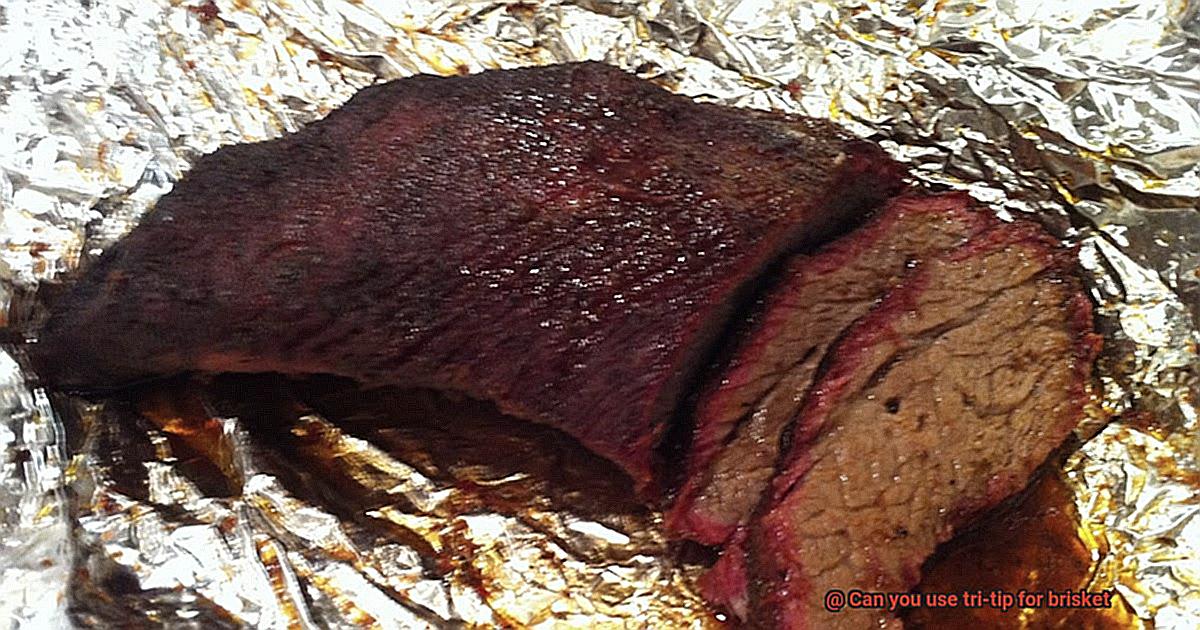
When it comes to substituting tri-tip for brisket, there are a few key factors to consider. As an expert in this matter, I’m here to guide you through the nuances of each cut and help you make the best substitution possible.
Firstly, let’s talk about fat. Brisket tends to have more fat marbling throughout the meat, which helps keep it moist and tender during cooking. In contrast, tri-tip has less fat marbling and can dry out more easily if overcooked. So, if you’re looking to substitute tri-tip for brisket, keep in mind that you may need to adjust your cooking method or add extra moisture to prevent it from drying out.
Next up is texture. Brisket is known for its melt-in-your-mouth tenderness, while tri-tip has a slightly firmer texture. This can be a matter of personal preference, but it’s worth keeping in mind when deciding whether to substitute one for the other. If you’re looking for a more tender texture, you may need to adjust your cooking method or marinate the tri-tip beforehand.
Finally, there is a difference in cooking time. Brisket is typically cooked low and slow for several hours to break down the tough connective tissue and render the fat. Tri-tip cooks more quickly, typically taking only 30-40 minutes on a grill or in the oven. So, if you’re substituting tri-tip for brisket, be sure to adjust your cooking time accordingly.
Overall, while you can certainly substitute tri-tip for brisket in certain recipes or situations, it’s important to keep these differences in mind to ensure that you end up with a delicious and properly cooked final product. Whether you’re smoking with hardwoods, braising in liquid, or slow roasting with dry rubs or marinades, keeping these differences in mind will help you achieve success every time.
To sum up:
- Brisket has more fat marbling, while tri-tip has less.
- Brisket is more tender, while tri-tip has a slightly firmer texture.
- Brisket requires low and slow cooking, while tri-tip cooks more quickly.
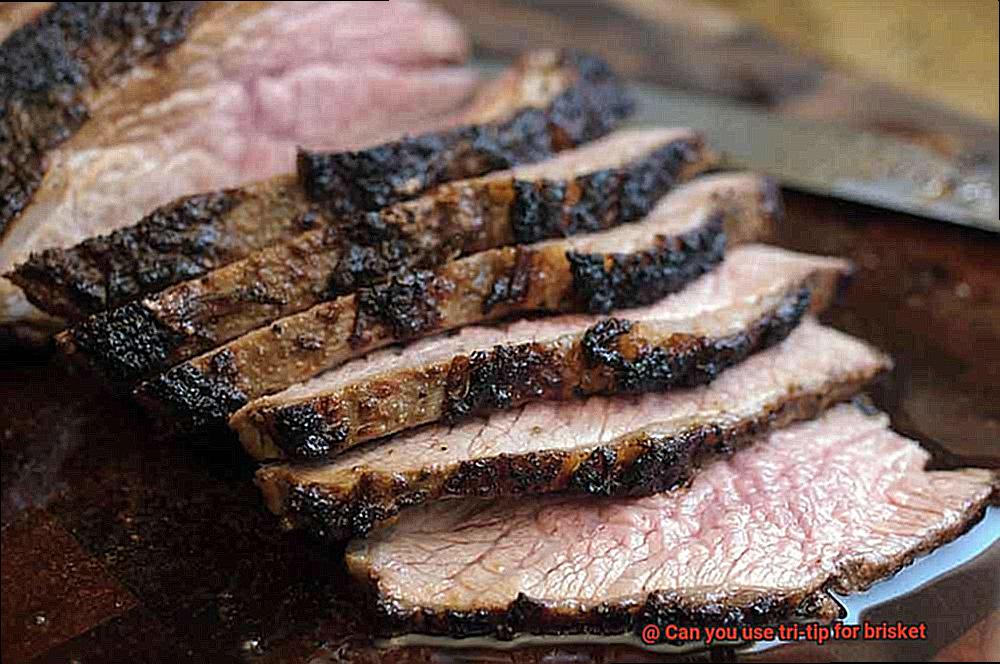
Fat Content of Tri-Tip vs. Brisket
If you’re deciding between two popular cuts of beef, tri-tip and brisket, it’s important to understand their differences in fat content.
Tri-tip, also known as bottom sirloin roast, is a lean cut of beef with approximately 10% fat. This makes it a healthier option for those who are mindful of their fat intake. However, its low-fat content can also make it prone to drying out and becoming tough if not cooked properly. To ensure optimal flavor and tenderness, consider adjusting your cooking method and adding extra moisture.
On the other hand, brisket is a heavily marbled cut of beef with around 30-40% fat. This high-fat content gives it a rich flavor and makes it a popular choice for smoking. During cooking, the fat slowly melts and infuses the meat with moisture and tenderness.
But what if you’re looking to use tri-tip as a substitute for brisket? With some modifications, it’s definitely possible. Consider adding a bacon wrap to the tri-tip before smoking or grilling. This will add extra fat and moisture, as well as a delicious smoky flavor.
Size Difference Between the Two Cuts
You may be curious about the size difference between tri-tip and brisket. As an expert in the field, let me share some insights with you.
Firstly, let’s dive into the cuts themselves. Tri-tip is a leaner cut that comes from the bottom sirloin, while brisket is a tough, fatty piece of meat that comes from the chest of the cow. But what really sets these two cuts apart is their size difference.
A brisket can weigh anywhere from 8-20 pounds, while a tri-tip usually weighs between 1.5-3 pounds. That’s a significant difference that affects their cooking methods in several ways.
When it comes to cooking a brisket, it requires patience and time to break down its tough connective tissue and fat content. It needs to be slow-cooked for many hours to achieve tender, flavorful results. In contrast, tri-tip can be cooked more quickly due to its smaller size. Simple grilling or roasting to medium-rare or medium doneness retains its tenderness and juiciness.
Other factors that make cooking these two cuts different include the following:
- Brisket requires seasoning and marinade applications before cooking to maximize flavor.
- Tri-tip works well with rubs and dry seasonings due to its quick cooking time.
- Brisket can be cooked with indirect heat for a long time to achieve perfect texture and flavor.
- Tri-tip is best cooked over direct heat to achieve a crispy crust on the outside while retaining moisture on the inside.
Adjusting Cooking Time When Using Tri-Tip Instead of Brisket
The key to success is adjusting the cooking time to ensure that your tri-tip is cooked to perfection.
First things first – it’s essential to understand that tri-tip is a leaner cut of meat than brisket. This means it cooks faster and can dry out if overcooked. To avoid this, you’ll want to adjust your cooking time based on the weight of your tri-tip. As a general rule of thumb, aim for about 45 minutes of cooking time per pound of meat.
But how do you know when your tri-tip is done cooking? That’s where a meat thermometer comes in handy. To achieve medium-rare, aim for an internal temperature of 135-140°F. For medium, aim for 145-150°F. Once you’ve reached your desired temperature, remove the meat from heat and let it rest for at least 10 minutes before slicing and serving.
Now, here’s a pro tip – tri-tip can be a bit bland on its own. Therefore, consider using a marinade or rub to add flavor and moisture to the meat. This will enhance the taste and keep your tri-tip juicy and delicious.
In summary, adjusting cooking time when using tri-tip instead of brisket is all about knowing the weight of your meat and monitoring the internal temperature with a meat thermometer. But don’t stop there. By adding extra flavoring techniques like marinades or rubs, you can take your dish to the next level.
lrBI9CCjPRc” >
Conclusion
In summary, don’t underestimate the power of tri-tip when it comes to creating a delicious BBQ dish. This leaner and more tender cut of beef can be a great alternative to traditional brisket, but it’s important to understand the differences in texture, fat content, and cooking methods.
While both cuts share a rich beefy taste that can be enhanced with low and slow cooking techniques, tri-tip requires some adjustments to achieve optimal tenderness. Adding moisture or flavoring techniques like marinades or rubs can help elevate the flavors and textures of your dish.
Whether you’re smoking with hardwoods, braising in liquid, or slow roasting with dry rubs or marinades, experimenting with different cooking methods will help you become a BBQ expert in no time.

